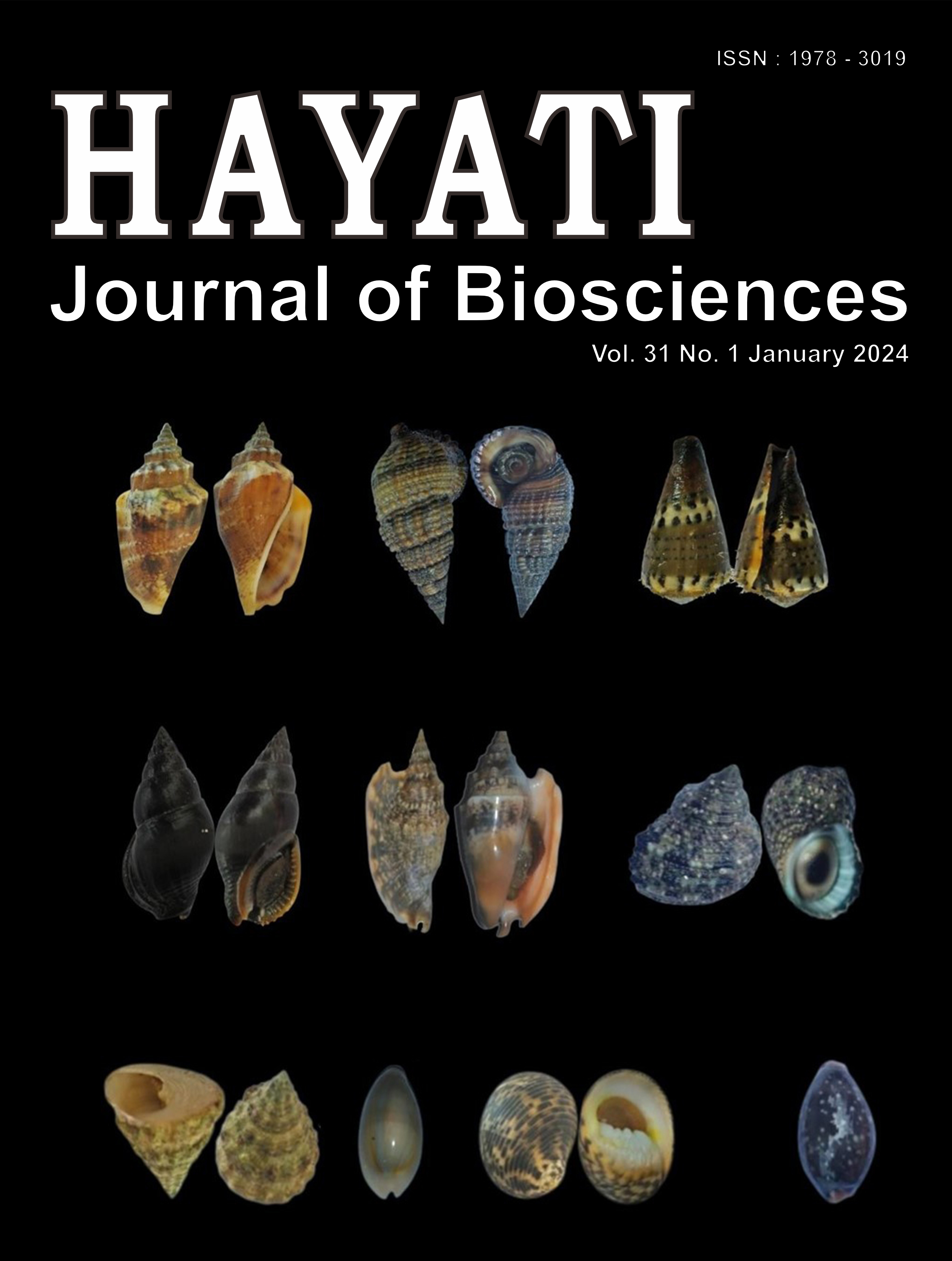Antigout Activity of The Spatholobus littoralis Hassk. Extract Fractions Against Xanthine Oxidase: Its Metabolite Profile and Inhibition Kinetics
DOI:
https://doi.org/10.4308/hjb.31.1.1-20Abstract
The Spatholobus littoralis Hassk. (S. littoralis Hassk.) is a native plant in Indonesia and has been widely used in traditional Dayaknese medicine for non-communicable degenerative diseases. One of these illnesses, known as gout, is caused by excessive uric acid in the blood, which is the catalytic byproduct of a xanthine oxidase (XO) enzyme. In this work, we investigated the inhibition kinetics of XO and identified bioactive compounds from the stem extract fractions of S. littoralis Hassk. using liquid chromatography-mass spectrometry/mass spectrometry (LC-MS/MS). Fractionation was carried out to obtain n-hexane, dichloromethane, and 1-butanol fractions from the water and 70% ethanol extracts. Fraction of 1-butanol from 70% ethanol and water extract displayed potent inhibitors of XO with IC50 value 116.91±3.51 and 137.15±5.00 mg/L, respectively. Lineweaver-Burk plot analysis showed that the 1-butanol fraction from the two extracts inhibited XO competitively. The 1-butanol fraction from the two extracts has been further identified as a bioactive fraction. The majority of the compounds in the two active fractions were phenolics. These findings revealed that the 1-butanol fraction from the two extracts is promising as an antigout treatment in the future.
Downloads
Downloads
Published
Issue
Section
License
HAYATI J Biosci is an open access journal and the article's license is CC-BY-NC. This license lets others distribute, remix, tweak, and build upon author's work, as long as they credit the original creation. Authors retain copyright and grant the journal/publisher non exclusive publishing rights with the work simultaneously licensed under a https://creativecommons.org/






















.png) Bogor Agricultural University
Bogor Agricultural University Department of Biology
Department of Biology The Indonesian Biological Society
The Indonesian Biological Society 

